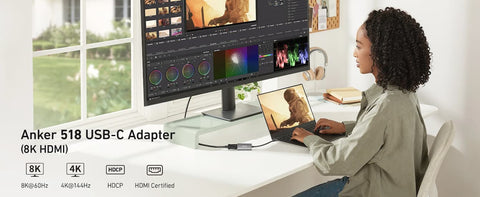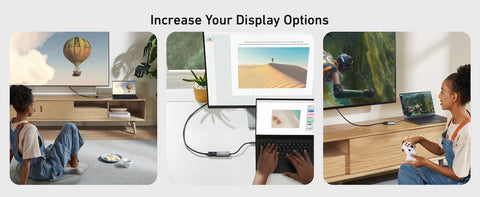
How to Connect Phone to Projector via USB - A Guide to Techniques
Share
In the ever-evolving landscape of digital connectivity, the ability to seamlessly bridge our portable devices with larger screens has become a necessity. One such instance is the connection between our smartphones and projectors, where the convergence of technology opens doors to captivating presentations, shared entertainment experiences, and efficient collaborations.
This guide presents a comprehensive walkthrough on how to connect your phone to a projector via a USB connection. Whether you're aiming to showcase your multimedia content to a wider audience or enhance your work dynamics, understanding the process, equipment, and considerations involved will empower you to effortlessly extend your device's display onto the big screen.
From the requisite adapters, different types of USB cables to the step-by-step setup and even insights into selecting the right accessories, this guide equips you with the knowledge needed to navigate the realm of phone-to-projector connectivity with confidence.

What Do You Need to Connect Your Phone to the Projector
When venturing into the realm of connecting your phone to a projector via USB, a few essential pieces of equipment will serve as your technological bridge, seamlessly ushering your content from the confines of your phone's screen to the grand canvas of a projector's display. Below are some of them:
USB-C to HDMI Adapter
Ideal for newer phones with a USB-C port, this adapter allows you to connect your device to a projector's HDMI input. By simply plugging the USB-C end into your phone and connecting an HDMI cable from the adapter to the projector, you can mirror or extend your phone's screen seamlessly.
The Anker 518 USB-C Adapter (8K HDMI) USB-C to HDMI adapter stands as a technological marvel that facilitates the connection between your phone and a projector with astonishing simplicity and versatility. Effortlessly achieve high-definition video up to 8K@60Hz, with a simple plug-and-play setup. It's HDCP-compliant, ensuring encrypted content displays seamlessly. Plus, its universal compatibility ensures a wide range of connections with TVs, monitors, and projectors.
{{ component: "product", handle: "a8317", sku: "A8317HA1"}}Another good example is the Anker 310 USB-C Adapter (4K HDMI). Designed to bring your content to life, it enables up to 4K video streaming directly from your device to any HDMI-equipped display. With its effortless plug-and-play feature, there's no need for complicated installations. Constructed with lightweight aluminum and reinforced braided nylon cable, it's both durable and efficient.
{{ component: "product", handle: "a8312", sku: "A83120A1"}}USB-C to HDMI Cable
An integrated solution, this cable has a USB-C connector on one end and an HDMI connector on the other. It offers a direct connection from your USB-C-equipped phone to the projector's HDMI port, eliminating the need for an additional adapter. This can be a tidier solution with fewer cables and connections to manage.

Steps to Connect Your Phone to The Projector via USB
Here's a comprehensive walkthrough of the steps to achieve this seamless connection:
Connect the Cable or Adapter to Your Phone
Creating a seamless connection between your phone and the USB-C to HDMI adapter or cable is the crucial first step towards projecting your content onto a larger screen.
Connect the Cable or Adapter to Your HDMI-Compatible Projector
With your phone successfully linked to the USB-C to HDMI adapter or cable, the next pivotal step in the process involves establishing the connection on the projector's end. This process, while straightforward, is essential to ensure that your content flows seamlessly from your phone to the projector's display.
Adjust the Input of Your Projector
With the physical connections between your phone and the projector established, the last step involves configuring the projector to recognize and display the content from your phone. While certain projectors might auto-adjust to the correct input, for others, you'll need to do this manually.
Simply press the "Input" or "Source" button, typically located on the projector's remote or control panel, to select the appropriate input source mirroring your phone's screen. This adjustment ensures that the projected image accurately mirrors what's on your phone's screen.
What to Look For When Choosing the HDMI Cable or Adapter For Your Projector?
Selecting the appropriate HDMI cable or adapter for your projector setup is a crucial aspect of ensuring seamless connectivity and optimal performance. The world of HDMI technology offers a variety of options, each with its own specifications and capabilities. To choose one that is suitable for your devices, you need to consider the following factors:
HDMI Version and Compatibility
When selecting an HDMI cable or adapter for your projector, understanding the HDMI version is crucial. Different versions come with distinct capabilities. For instance, HDMI 1.4 is tailored for 3D video and Audio Return Channel (ARC), supporting up to 1080p video at 60Hz. Meanwhile, HDMI 2.0 elevates this with 4K video capability at 50/60Hz, boasting 32 audio channels and an impressive bandwidth of 18.0 Gbit/s. Hence, ensure that your cable or adapter aligns with your device's HDMI version for optimal compatibility and performance.
Resolution and Refresh Rate
Resolution dictates the clarity and detail of the projected image, while the refresh rate affects motion smoothness. For daily tasks and standard media viewing, a cable supporting 1080p might suffice. However, for 4K content or high-end gaming experiences, you'll need a cable or adapter that supports at least 4K resolution at 60Hz. Always check these parameters to ensure a sharp, lag-free projection.
Connector Types
Not all HDMI connectors are created equal. The common types include Type A (standard HDMI), Type C (mini HDMI), and Type D (micro HDMI). Depending on your device and projector's port configuration, select a cable or adapter with the appropriate connector type. If your devices have different port types, consider an adapter that bridges the two, ensuring seamless connectivity.
Conclusion
In the ever-evolving realm of technology, seamlessly connecting your phone to a projector enhances presentations, entertainment experiences, and group collaborations. From ensuring the appropriate physical connections to understanding the nuances of HDMI cables and adapters, every step is pivotal. With the right tools and knowledge at your disposal, every projection becomes a vivid reflection of your phone's capabilities, ushering in an era of bigger, clearer, and more impactful visual experiences.
FAQ
Do all projectors and phones support USB connection for screen mirroring?
Not all projectors and phones support USB connection for screen mirroring. While many modern projectors and phones have USB ports, the capability to use USB for screen mirroring depends on the specific models and their supported features. It's important to check the specifications of both your projector and phone to determine if USB screen mirroring is supported.
Do I need to install any apps to connect my phone to the projector via USB?
No. Generally, connecting your phone to a projector via USB doesn't require a specific app, as the connection is hardware-based.
Can I connect wirelessly to the projector instead of using a USB cable?
Yes, you can often connect wirelessly to a projector without using a USB cable. Many projectors and phones support wireless connectivity standards like Wi-Fi or Bluetooth, which allow you to mirror your phone's screen onto the projector without the need for physical cables. This wireless connection might require specific apps, software, or settings on both your phone and the projector. Check the capabilities of your devices to see if wireless screen mirroring is an option.